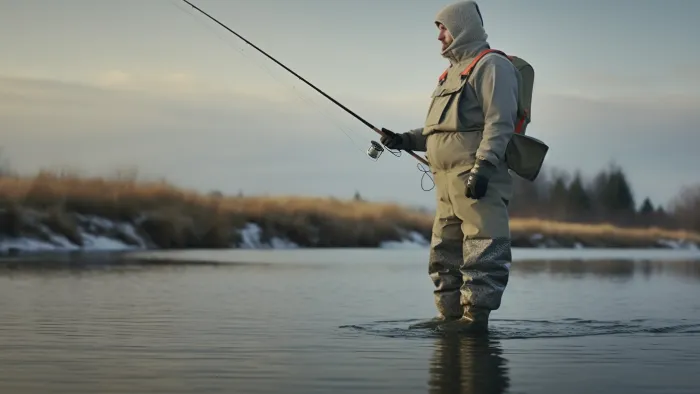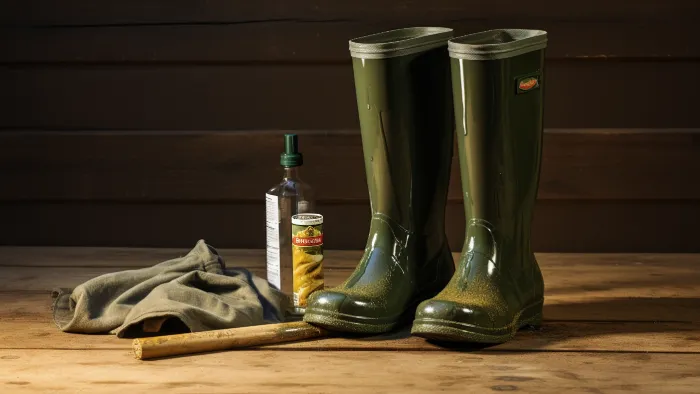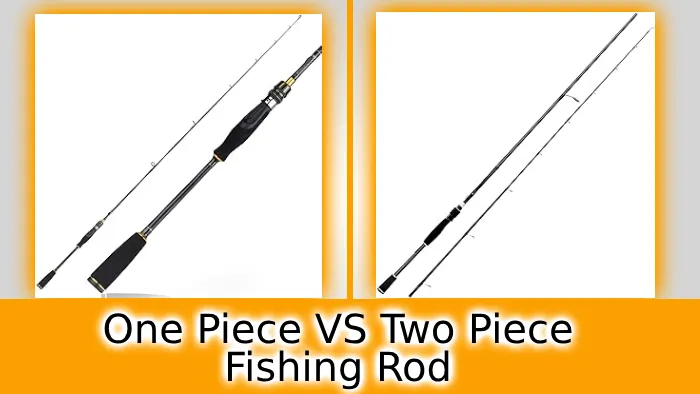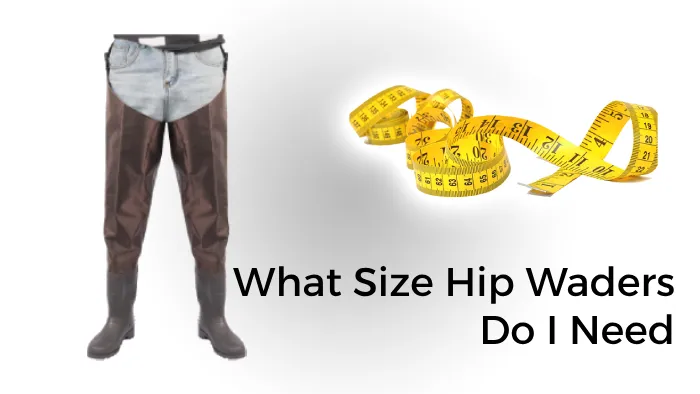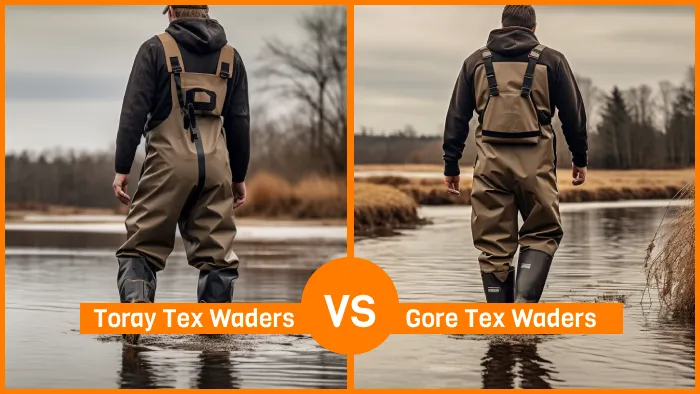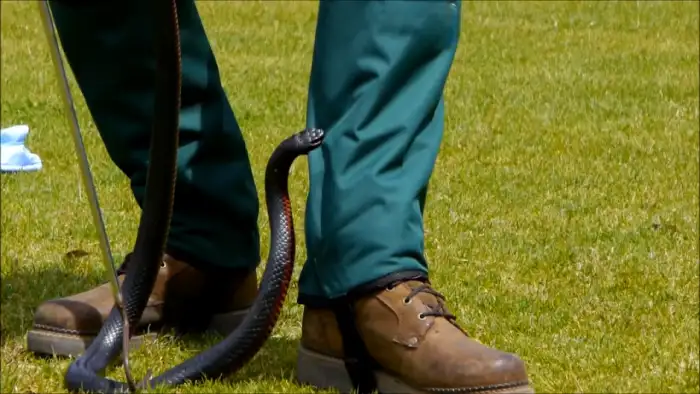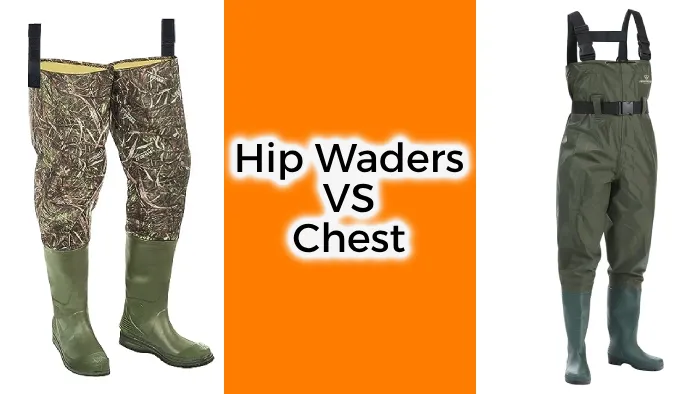Do Neoprene Waders Stretch: 9 Preventive Tips Before Fishing
Do you ever wonder if your neoprene fishing waders have the ability to stretch? Neoprene waders serve as essential gear for fishing enthusiasts, offering comfort, protection, and flexibility during aquatic adventures.
Yet, the integrity of these waders can be compromised over time due to various factors, including stretching. To ensure your neoprene waders’ longevity and optimal performance, it’s crucial to employ a combination of preventive measures.
This guide outlines a comprehensive set of tips to prevent neoprene waders from stretching. From selecting the right size to proper storage techniques, each tip plays a vital role in maintaining your fishing gear’s shape, comfort, and durability.
Do Neoprene Waders Stretch: 9 Tips for Prevention
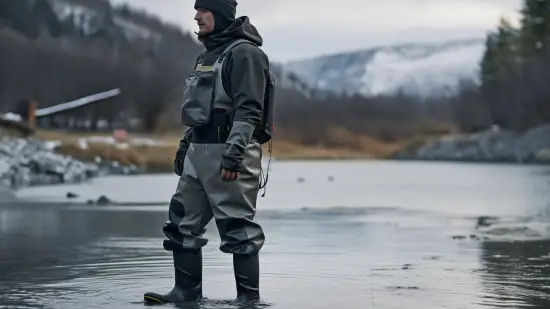
To prevent your neoprene waders from stretching, you should follow several key tips.
- Tips 01: Proper sizing
- Tips 02: Avoid overstretching
- Tips 03: Proper storage
- Tips 04: Avoid prolonged Sun exposure
- Tips 05: Regular cleaning
- Tips 06: Use a wader belt
- Tips 07: Avoid sitting or kneeling for prolonged periods
- Tips 08: Repair damage promptly
- Tips 09: Limit excessive movement
Let’s take a look at each tip in greater detail.
Tips 01: Proper Sizing
Make sure you’re wearing fishing waders that are the right size for your body measurements to prevent them from stretching excessively.
Neoprene waders, like any other material, have a certain degree of stretchability. However, choosing the proper size can significantly reduce the risk of excessive stretching.
When waders are too tight, the material is put under unnecessary stress, which can lead to tearing. On the other hand, waders that are too loose can stretch out over time due to repeated use, causing a loose and uncomfortable fit.
To ensure the best fit, refer to the manufacturer’s sizing chart and measure your body accurately. Remember, properly sized waders will prevent excessive stretching and provide you with the utmost comfort and durability during your fishing adventures.
Tips 02: Avoid Overstretching
When putting on or taking off your waders, be careful not to pull or tug too forcefully, as this can cause unnecessary stress on the fabric. Neoprene waders are designed to stretch, but overstretching them can lead to tears and damage.
To avoid this, gently guide your legs and feet into the waders, allowing the material to naturally stretch and conform to your body shape. Remember that neoprene waders should fit snugly but not too tight, as this can restrict movement and cause discomfort.
Tips 03: Proper Storage
Storing your neoprene waders upside down on a wide hanger in a cool, dry place is important for preventing stretching and damage. Here are three reasons why proper storage is crucial for maintaining the integrity of your fishing waders:
- Preserves the shape: Hanging your neoprene waders upside down helps to retain their shape and prevent stretching. This is especially important for the booties, as they can easily lose their form and become uncomfortable if not stored correctly.
- Prevents moisture buildup: A cool, dry place is essential for preventing moisture buildup, which can lead to mold and mildew growth. Neoprene waders are designed to be water-resistant, but prolonged exposure to damp environments can compromise their effectiveness.
- Avoids creasing and folding: Folding or creasing your neoprene waders can cause permanent damage, such as creases and weak spots in the material. Hanging them on a wide hanger ensures that they are supported evenly and reduces the risk of creasing.
Tips 04: Avoid Prolonged Sun Exposure
Neoprene, a synthetic rubber commonly used in fishing waders, can degrade when exposed to prolonged sunlight and high temperatures. This degradation weakens the material, causing it to lose elasticity and flexibility.
When neoprene waders lose their stretch, they may not fit properly or provide the necessary insulation and protection.
To avoid this, storing your waders in a cool, shaded area away from direct sunlight is important. Covering them with a cloth or wader bag can provide an added layer of protection.
Tips 05: Regular Cleaning
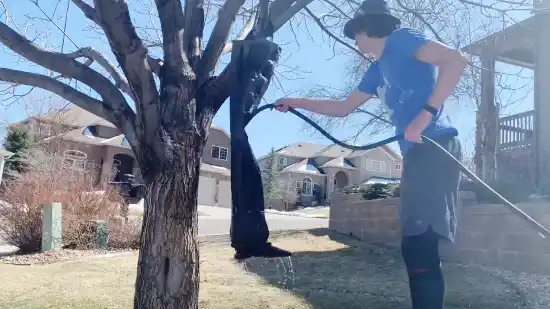
Regularly rinsing your waders with freshwater helps remove saltwater, mud, and other contaminants that can weaken the fabric and cause stretching. By following this simple cleaning routine, you can prolong the lifespan of your neoprene fishing waders and ensure their optimal performance.
Here are three important reasons why regular cleaning is essential:
- Prevents fabric degradation: Dirt, salt, and mud can degrade the neoprene material over time, making it more prone to stretching and tearing. By rinsing off these contaminants, you can maintain the integrity of the fabric and prevent unnecessary damage.
- Reduces odor and bacteria growth: Fishing adventures can lead to unpleasant odors and bacterial growth inside your waders. Regular cleaning helps eliminate these odors and reduces the risk of bacterial infections, ensuring a more comfortable and hygienic experience.
- Enhances breathability: Over time, dirt and debris can clog the pores of the neoprene fabric, reducing its breathability. By rinsing your waders regularly, you can keep the pores clear and maintain optimum breathability, allowing your skin to stay dry and comfortable.
Tips 06: Use a Wader Belt
When wearing your waders, always remember to use a wader belt to cinch the waist area and reduce tension on the neoprene fabric. This simple yet crucial step can help prolong the lifespan of your waders and ensure they perform at their best.
Neoprene, although durable, can stretch over time, especially when exposed to water pressure. Using a wader belt creates a secure fit around your waist, preventing unnecessary stretching and maintaining the integrity of the neoprene material.
This is especially important when wading in deeper water, where the pressure on your waders increases. So, next time you gear up for your fishing adventure, don’t forget to grab your wader belt and enjoy a comfortable and reliable experience.
Tips 07: Avoid Sitting or Kneeling for Prolonged Periods
Spending extended periods sitting or kneeling in neoprene waders can cause stress on the material and lead to stretching. To ensure the longevity of your waders, it is important to avoid prolonged periods of sitting or kneeling.
Here are some tips to help you avoid unnecessary stress on your neoprene waders:
- Take regular breaks: Standing up and moving around periodically can help relieve pressure on the material and prevent stretching.
- Use knee pads: If you need to kneel for a task, using knee pads can provide extra cushioning and protect your waders from excessive stress.
- Opt for alternative positions: Instead of constantly sitting or kneeling, try to vary your body positions by standing or squatting when possible.
Tips 08: Repair Damage Promptly
Repair any tears, holes, or weaknesses in your neoprene waders promptly to prevent further damage. Neglecting these small issues can lead to stretching, compromising the integrity of your waders and reducing their effectiveness in keeping you dry.
Use appropriate wader repair kits or adhesives specifically designed for neoprene material to repair your neoprene waders. Start by cleaning the damaged area with water and a mild detergent, ensuring it is free from dirt and debris.
Apply the repair adhesive or patch over the tear or hole, following the manufacturer’s instructions carefully.
Allow sufficient time for the adhesive to dry and cure before reusing your waders. Regularly inspect your waders for any signs of damage and address them promptly to prolong their lifespan and maintain their performance.
Tips 09: Limit Excessive Movement
To prevent permanent deformation, avoiding excessive stretching of neoprene during activities like high-stepping or jumping is important. Neoprene fishing waders are designed to stretch to provide flexibility and comfort while on the water.
Here are some tips to help you limit excessive movement and maintain the integrity of your neoprene fishing waders:
- Choose the right size: Ensure that your waders fit properly to minimize stretching and strain on the material.
- Use caution when taking big steps: Avoid high-stepping or jumping, as these movements can stress the neoprene excessively.
- Don’t overstretch the fabric: Be mindful of how much you stretch the neoprene when removing your waders.
- Avoid snagging: Avoid sharp objects or rough surfaces that can snag and tear the neoprene.
- Store them properly: Hang your waders in a cool, dry place to prevent unnecessary stretching and damage over time.
Does Neoprene wader stretch when wet?
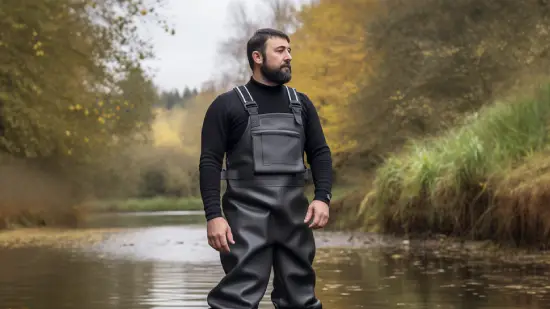
When wet, neoprene waders can become more flexible and pliable due to the softening of the fibers. This means that the neoprene material can stretch slightly when it comes into contact with water.
The elasticity of neoprene allows it to conform to your body shape and provide a comfortable fit while fishing. However, it is important to note that the stretchiness of neoprene waders when wet is only temporary. Once the waders dry, the neoprene fibers return to their original state, providing a snug fit again.
Do neoprene waders stretch out over time?
If you wear neoprene waders frequently, they will gradually lose their original shape and become more stretched out over time.
The constant stress and movement in the shoulders, elbows, knees, and buttocks cause the neoprene material to stretch permanently. This stretching occurs due to the inherent properties of neoprene and the repeated strain it endures during use.
Here are three reasons why neoprene waders stretch out over time:
- Neoprene’s elasticity: Neoprene is a flexible and stretchy material, allowing for freedom of movement. However, this elasticity also means that it can gradually stretch out with prolonged use.
- Stress concentration: Certain areas of the waders, such as the shoulders and knees, experience more stress and movement than others. Over time, this concentrated stress can permanently stretch these areas.
- Material fatigue: Like any material, neoprene can experience fatigue over time. Repeated stretching and contracting during use can weaken the neoprene, causing it to lose its original shape.
Identify the Secrets to Long-Lasting Neoprene Waders
Neoprene fishing waders can indeed stretch over time, especially when wet. It is important to prevent this by taking proper care of your waders and following specific maintenance guidelines.
Remember, like a well-tuned instrument, your waders need regular attention to maintain their optimal performance. Treat them with care, store them properly, and they will reward you with years of comfortable and reliable use.
Don’t let your waders lose their rhythm, keep them in tune for your fishing hobby.

